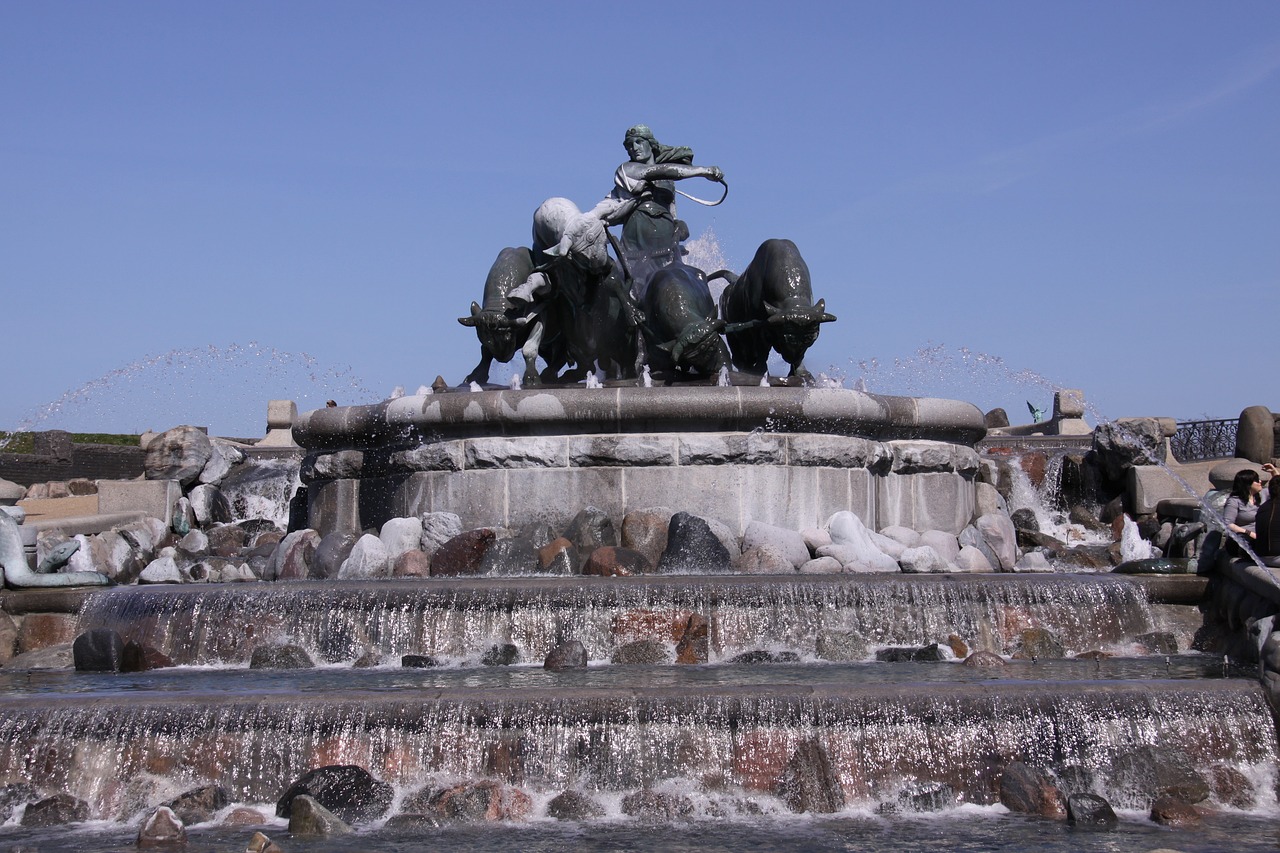Gefion: The Norse Goddess of the Single Women
The Prose Edda by Snorri Sturluson introduces Gefion (or Gefjon), the fourth goddess of the Æsir, succeeding Frigg, Sága, and Eir, who is renowned for her healing abilities. Although often referred to as a virgin goddess, the narrative surrounding Gefion’s life presents contradictions, notably her earlier stories of having four sons, who were actually oxen, with a giant. She later became the wife of Skjold, Odin’s offspring, and made her home in Leire, Denmark. Additionally, the name “Gefn” is associated with Freyja, the Norse deity linked to love and fertility, suggesting that Gefion might share a connection with Freyja, who herself is often viewed as an alternate persona of Frigg.
Gefion’s Creation of Zealand
As narrated in The Prose Edda, King Gylfi of Sweden is credited with rewarding a mysterious beggar-woman with a sizeable plot of land. This woman turned out to be Gefion, an Æsir deity. Fetching her four oxen-sons from Giantland, she yoke them to a plough. The plough, however, was so powerful that it unearthed the land, which the oxen drew into the sea, ultimately forming Zealand. The area left behind became a lake now recognized in Sweden as “The Lake,” reflecting the shape and size of Zealand, characterized by many bays similar to its headlands. As the poet Bragi the Old expressed, Gefion’s efforts expanded Denmark, with her oxen recognized for their exertion during this monumental task.
Notably, the tale highlights the geographical connection of Zealand, known as Sealand in Danish, where Copenhagen sits. The legacy of Gefion endures in contemporary landmarks like the Gefion Fountain in Copenhagen, which portrays her guiding the plough drawn by four great oxen.
From the Ynglinga Saga
In the Ynglinga Saga, Snorri Sturluson recounts Odin’s visionary journey and his efforts to secure territories for his descendants, beginning from Asagarth. His explorations took him across various regions, including Gardarik and Saxland. Eventually reaching the sea, Odin settled on an island called Odensö in Funen, and subsequently, he beseeched Gefion to search for land.
Upon arriving at Gylfi’s realm and receiving his blessings, she sought a giant’s residence where she bore four son-oxen. Utilizing her sons in the guise of oxen, she worked the land, tearing it from the sea towards what would be known as Selund (ancient name for Zealand). After marking her territory, Gefion wed Skjold, Odin’s son, and relocated to Leidra. The result of her ploughing left behind Löginn, a lake or sea that mirrors Zealand’s contours.
Bragi the Old’s verses resonate with the vigor of Gefion’s endeavors, as they depict her triumphs and the birth of the Danish lands.
In essence, Gefion’s saga weaves a rich tapestry of myth, land creation, and divine lineage, contributing profoundly to Norse mythology and heritage.



